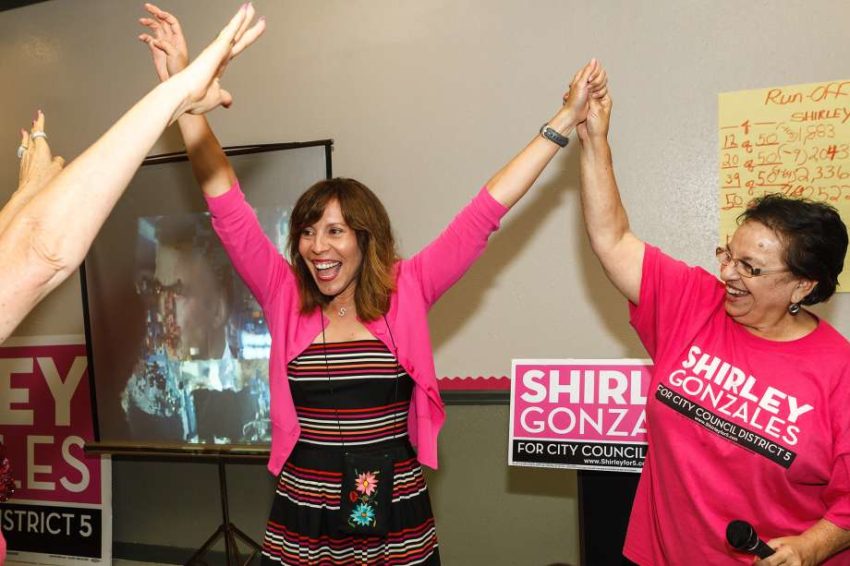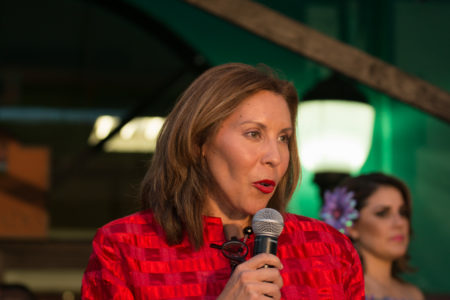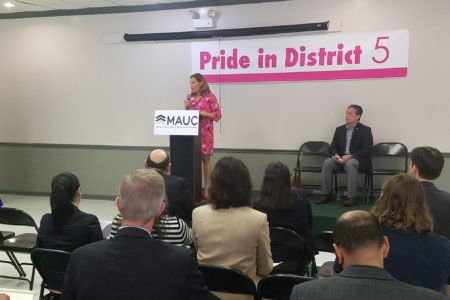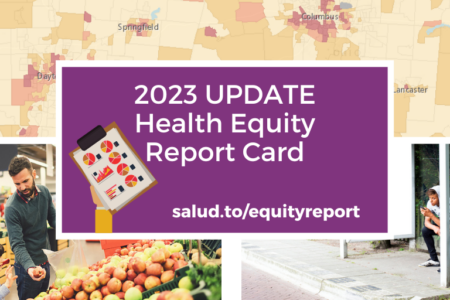
Share On Social!
When San Antonio native Shirley Gonzales earned a business degree years ago, she immediately went to work to find new locations to expand her family’s local business, Bill’s Pawn Shop.

Gonzales studied the city’s historic, largely Latino Westside.
She loved the area so much, she moved her family there.
But she found it hard to navigate the city’s complex procedures for opening and expanding businesses—an experience that eventually led her to run for, and earn, a seat on the San Antonio City Council.
Now Gonzales is pushing to revitalize business on the Westside and helping residents find better, more affordable homes to live in, too.
“There is so much about this community that is good,” Gonzales said. “It has great history, great people living here, strong family-owned businesses. I think it honestly just doesn’t get the overall attention that it needs.”
Shining a New Light on the Westside
Gonzales has always been passionate about her city.
She stayed home to attend college, earning bachelor’s and master’s degrees in business from St. Mary’s University. After graduation, she joined the family business and spent the next 20 years helping it grow.
It was during this phase that the Westside really entered her mind.
Growing up, Gonzales had fond memories of the area, including some of its iconic landmarks like the Woodlawn Lake Park trails and the old Malt House restaurant. However, as an adult, when she visited the area to research her business expansion, she fell in love with it all over again. She and her family moved to the area full-time and became entrenched in the community.
“I train for Iron Man marathons, so when I go running through our community, I see amazing things that I wish everyone knew about,” Gonzales said.
When she became the District 5 San Antonio City Council member for the Westside in 2013, she has made it a policy point to make as many people see what she sees in her district.
She said she wants residents to not only live there, but stay and thrive.
“I really just decided on my own to take this path. I didn’t consult with anyone or talk with anyone about my decision because I didn’t want to take the risk of someone trying to talk me out of it,” Gonzales said. “I did have the full support of my mother and my husband, though. I thought I could make a difference in the city and in District 5. I ran and I won and once I got into office, I started looking around for the best ways that I could help our community here.”
Home Ownership and Resident Retention

Affordable housing soon became a key issue for Gonzales.
The City of San Antonio has a massive shortage of affordable housing, and recently formed a task force to address the issue.
Since the 2000s, the city has grown by leaps and bounds in terms of population; however, this has often come at the expense of affordable housing in the urban corridors. In Gonzales’ new district, this concern has been clear and present for many years.
About 56.4% of households in District 5 are owner-occupied, according to The Rivard Report. Also, the median household income is $28,952 which makes the area one of the most “socioeconomically disadvantaged” in the city.
“In District 5, we have the bulk of the city’s public housing projects,” Gonzales said. “The rest of the projects that the city used to own and manage simply do not exist anymore. There has been a real evolution in public housing. This was something I never thought about until I moved to the area.”
Gonzales knew the West side’s population was shrinking.
Every census tract in her district has been shedding population numbers at staggering rates since its peak in the 1950s, she said.
“We have a real shortage of people living here. Having a mechanism to attract and retain people in the area is incredibly important,” she said. “Having a strong population is essential to the businesses, to the school districts, to bringing in revitalization.”
Gonzales said she had to tackle housing.
“Having people here is the main point and to do that we needed something to address housing,” she said. “That means we needed something to address public housing, affordable housing for every sector—single-family, multi-family.
“We need people to live here and to stay here.”
But it wouldn’t be easy. Most homes here are old. More than half were built from 1940-1969. District 5 lags behind as apartment and housing construction occur at an all-time-high in other parts of the city.
“Long-term success in providing affordable, quality housing in the urban core depends on attracting private investment for low- and moderate-income residents,” she said. “This means finding ways to lower costs for small-scale rehabilitation and infill housing development so that new investments do not generate involuntary displacements.”
How does this problem get addressed?
Programs to Promote Change
After seeking advice from community leaders and housing experts, including the National Association for Latino Community Asset Builders (NALCAB), Gonzales created a framework for a pilot program to address local housing needs.
“This is going to be a public-private partnership that is only available to District 5 residents,” Gonzales said. “The idea for the program has literally been something that is years in the making. What makes now the right time for us to launch this pilot though is that we have a Mayor and a City Council that takes this very seriously.”
The program, which launched in early 2018 with the full blessing of the city government, has three major components:
- Connecting low- and moderate-income residents to housing resources that fit their needs.
- Leveraging private investment across District 5, including a blend of home ownership and rental opportunities that recognize cultural and historical assets on the Westside.
- Protecting residents from predatory market activity and preventing involuntary displacement.
“The way I see the program working is it being a ‘network’ of resources for District 5 residents, investors, and builders,” Gonzales said. “One of the main problems I have found is keeping people, especially young people, in the area.”
For example, the The Mexican American Unity Council is creating a housing center at its headquarters. There, “residents can get counseling services certified by the U.S. Department of Housing and Urban Development, along with help on title issues through a partnership with the University of Texas at San Antonio’s College of Public Policy,” the Express-News reports.
“As part of the program, nonprofit lender LiftFund plans to launch the San Antonio Housing Revitalization Fund…which will lend to Community Reinvestment Act-eligible contractors who have under $1 million in annual revenues,” according to the report.
Gonzales also wants to change young adults’ perceptions that success means leaving their homes in District 5.
“Part of the pilot-program is going to be to make it easier for millennials, who often come into ownership of the home they grew up in, to reinvest in it,” Gonzales said. “We want to encourage builders to remodel existing homes and we want to encourage these younger people to stay in the area.”
With the full blessing of the Mayor and City Council, Gonzales held the first “summit” regarding the pilot program in January 2018 with the main objective of explaining to residents the “owner-occupied rehab” component of the initiative.
“Once people qualify for the program, they have to be homeowners and be at a certain income level,” she said. “After that, our program will connect the dots as far as getting them the title of the homes and finding the resources they need to reinvest in their homes.”
Residents interested in taking advantage of the program can contact the Councilwoman’s office.
“I know it’s a small step right now in advancing the needs of our neighborhoods,” Gonzales said. “But, I also know that this is a step in the right direction. I think once people see what these investments can and do mean to the community, more people will follow our lead. This is a great place to live.”
Can you stimulate affordable housing in your city?
Email us to connect with Gonzales about her plans!
By The Numbers
56.9
percent
of Latinos are "housing cost burdened"
This success story was produced by Salud America! with support from the Robert Wood Johnson Foundation.
The stories are intended for educational and informative purposes. References to specific policymakers, individuals, schools, policies, or companies have been included solely to advance these purposes and do not constitute an endorsement, sponsorship, or recommendation. Stories are based on and told by real community members and are the opinions and views of the individuals whose stories are told. Organization and activities described were not supported by Salud America! or the Robert Wood Johnson Foundation and do not necessarily represent the views of Salud America! or the Robert Wood Johnson Foundation.



